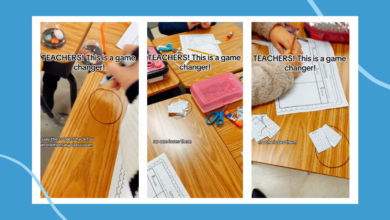No-Code And Low-Code Technologies Makes eLearning Inclusive Premium Scholorships Info

Inclusivity In eLearning
eLearning, or electronic learning, refers to the use of digital technologies to deliver educational content outside the traditional classroom. This mode of learning encompasses a wide range of formats, including online courses, virtual classrooms, and digital collaboration tools, enabling learners to access educational resources anytime, anywhere.
Importance Of Inclusivity In eLearning
Inclusivity in eLearning ensures that opportunities are accessible to all learners, regardless of their abilities, backgrounds, or geographical locations. An inclusive eLearning environment supports diverse learning needs and promotes equal participation, making education more equitable and effective.
Introduction To No-Code And Low-Code Technologies
No-code and low-code technologies allow users to create applications and websites with minimal or no programming knowledge. These platforms provide intuitive interfaces and drag-and-drop functionality, enabling users to design, develop, and deploy software solutions quickly and efficiently. By lowering the technical barrier, no-code/low-code tools democratize technology, making it accessible to a broader audience.
Differences Between No-Code And Low-Code
No-code platforms enable users to build applications without writing any code. They typically feature visual interfaces and pre-built templates, making them accessible to users with no technical background. Low-code platforms, on the other hand, require some level of coding knowledge but significantly reduce the amount of manual coding needed. They combine visual development tools with traditional coding, allowing developers to create complex applications more efficiently.
Historical Development Of No-Code/Low-Code Platforms
The development of no-code/low-code platforms can be traced back to the early 2000s with the emergence of various tools for website creation. Over the years, these platforms have evolved, incorporating more sophisticated features and expanding their capabilities to include mobile app development, workflow automation, and enterprise-level applications. The demand for rapid digital transformation and the shortage of skilled developers have driven the growth of the no-code/low-code market.
Benefits Of No-Code/Low-Code Tech
No-code/low-code platforms offer several advantages:
- Speed
Rapid app development and deployment of applications. - Accessibility
Enables nontechnical users to participate in software development. - Cost-effectiveness
Reduces the need for extensive coding resources. - Flexibility
Can easily adapt and modify applications as requirements change. - Innovation
Encourages experimentation and innovation by lowering the barriers to entry.
The Intersection Of No-Code And Low-Code Technologies And eLearning
Integration Of No-Code/Low-Code In eLearning Platforms
No-code and low-code technologies are increasingly integrated into eLearning platforms to enhance their functionality and User Experience. These technologies enable the creation of custom eLearning solutions tailored to specific educational needs without requiring extensive technical expertise. Examples include customizable Learning Management Systems (LMSs), interactive course modules, and mobile learning apps.
How No-Code/Low-Code Tech Enhances eLearning
No-code/low-code platforms enhance eLearning in several ways:
- Personalization
Facilitates the creation of personalized learning paths and content. - Interactivity
Enables the development of interactive and engaging learning materials. - Accessibility
Provides tools to create accessible content for learners with disabilities. - Collaboration
Supports collaborative learning experiences through integrated communication tools.
Case Studies Of Successful Integration
- Case study 1
A university used a low-code platform to develop a custom LMS that catered to the specific needs of its students and faculty, resulting in improved engagement and satisfaction. - Case study 2
A corporate training provider leveraged a no-code platform to create interactive training modules quickly, allowing them to respond rapidly to changing training needs. - Case study 3
A nonprofit organization utilized a low-code platform to develop an accessible eLearning solution for learners with special educational needs, significantly enhancing their educational outreach.
Enhancing Accessibility
Importance Of Accessibility In eLearning
Accessibility in eLearning is crucial to ensure that all learners, including those with disabilities, have equal opportunities to access and benefit from educational content. Accessible eLearning materials remove barriers and create an inclusive learning environment that accommodates diverse needs.
No-Code/Low-Code Tools For Accessibility
No-code/low-code platforms offer various tools and features to enhance accessibility, such as:
- Screen reader compatibility
Ensuring content is readable by screen readers. - Closed captions and transcripts
Providing captions and transcripts for audio and video content. - Keyboard navigation
Designing interfaces that are navigable using a keyboard. - Responsive design
Creating content that adjusts to different screen sizes and devices.
Examples Of Accessible eLearning Platforms
- Platform 1
An eLearning platform that uses a no-code tool to provide closed captions and transcripts for all video content, ensuring accessibility for learners with hearing impairments. - Platform 2
A low-code eLearning solution that includes customizable templates for creating screen reader-friendly content. - Platform 3
An educational app developed with a no-code platform that features keyboard navigation and high-contrast design for visually impaired users.
Empowering Educators
No-Code/Low-Code Tools For Course Creation
No-code/low-code tools empower educators by providing them with the means to create and customize courses without needing technical expertise. These platforms offer drag-and-drop interfaces, pre-built templates, and integration with various multimedia elements, making course creation straightforward and efficient.
Reducing The Technical Barrier For Educators
By eliminating the need for coding skills, no-code/low-code platforms reduce the technical barrier for educators. This democratization of technology allows more educators to participate in the development of digital learning materials, creating a more diverse and rich educational ecosystem. Educators can focus on content quality and pedagogical effectiveness rather than technical details, leading to improved learning outcomes.
Examples Of Educator-Created Courses Using No-Code/Low-Code
A high school teacher used a no-code platform to develop an interactive history course, incorporating multimedia elements like videos, quizzes, and virtual tours to engage students.
Customization And Personalization
Importance Of Personalized Learning Experiences
Personalized learning experiences are crucial for addressing the unique needs and preferences of individual learners. Customization allows learners to progress at their own pace, focus on areas where they need improvement, and engage with content that resonates with their interests and learning styles.
How No-Code/Low-Code Enables Customization
No-code/low-code platforms enable extensive customization by offering flexible design tools and integration capabilities. Educators can tailor content, assessments, and learning paths to meet the specific needs of their students, creating a more effective and engaging learning environment.
Examples Of Personalized eLearning Experiences
An educational app developed using a no-code low-code platform offered personalized learning paths based on the learner’s goals and preferences, enhancing motivation and engagement.
Cost-Effectiveness
Cost Benefits Of No-Code/Low-Code For eLearning Development
No-code/low-code platforms offer significant cost benefits for eLearning development by reducing the need for extensive coding resources and development time. Organizations can create and deploy educational solutions more quickly and at a lower cost compared to traditional development methods.
Comparison With Traditional Development Methods
Traditional eLearning development often involves hiring skilled developers, extensive coding, and longer development cycles, leading to higher costs and longer time to market. In contrast, no-code/low-code platforms streamline the development process, allowing for rapid prototyping, iterative development, and faster deployment, all while reducing costs.
Scalability And Flexibility
Scalability Advantages Of No-Code/Low-Code Platforms
No-code/low-code platforms offer scalability advantages, allowing eLearning solutions to grow and adapt to increasing user numbers and changing needs without significant rework. These platforms support the easy addition of new features, integration with other tools, and adjustments to content as necessary.
Flexibility In Course Design And Updates
The flexibility of no-code/low-code platforms enables educators to design courses that can be easily updated and modified. This adaptability is crucial for keeping content relevant and up-to-date, addressing feedback from learners, and incorporating new educational trends and technologies.
Examples Of Scalable eLearning Solutions
- Example 1
An educational institution used a low-code platform to scale their online learning offerings from a few hundred to several thousand students without compromising performance or User Experience. - Example 2
A corporate training provider leveraged a no-code tool to rapidly update their training modules in response to new industry regulations, ensuring compliance and relevance. - Example 3
A language learning platform developed using a low-code solution was able to quickly expand its course catalog and user base, accommodating diverse learner needs and preferences.
Collaboration And Community Building
Facilitating Collaboration Among Educators And Students
No-code/low-code platforms facilitate collaboration among educators and students by providing tools for communication, content sharing, and collaborative work. Features such as real-time editing, discussion forums, and group projects enhance the collaborative learning experience.
Building Communities Through No-Code/Low-Code Platforms
These platforms also support community building by enabling the creation of online spaces where learners and educators can connect, share resources, and support each other. Community features such as user profiles, social media integration, and community forums foster a sense of belonging and engagement.
Examples Of Collaborative eLearning Environments
An eLearning platform developed with a no-code tool included features for collaborative project work, allowing students to work together in real time on assignments and presentations.
Security And Compliance
Ensuring Data Security In eLearning
Data security is a critical concern in eLearning, where sensitive information such as student data and educational records must be protected. No-code/low-code platforms incorporate robust security measures, including encryption, user authentication, and access controls, to safeguard data.
Compliance With Educational Standards And Regulations
No-code/low-code solutions also help ensure compliance with educational standards and regulations, such as GDPR for data protection and ADA for accessibility. These platforms often include built-in compliance features and tools to help organizations meet legal and regulatory requirements.
No-Code/Low-Code Solutions For Security And Compliance
- Example 1
A low-code eLearning platform provided integrated security features such as end-to-end encryption and multifactor authentication, ensuring the protection of student data. - Example 2
A no-code tool enabled an educational institution to create accessible content that complied with ADA standards, enhancing accessibility for learners with special educational needs. - Example 3
A corporate training provider used a low-code platform to develop training modules that adhered to industry-specific compliance regulations, ensuring both legal compliance and learner safety.
Challenges And Limitations Of No-Code And Low-Code Technologies
Technical Limitations Of No-Code/Low-Code Platforms
Despite their many benefits, no-code/low-code platforms have certain technical limitations. These platforms may not support highly complex or specialized functionality, and there can be constraints related to performance, customization, and scalability for very large or intricate projects.
Potential Challenges In Implementation
Implementing no-code/low-code solutions can present challenges such as integration with existing systems, user adoption, and maintaining consistency and quality across different courses and modules. Additionally, there may be a learning curve for educators unfamiliar with these platforms.
Addressing And Overcoming Challenges
To overcome these challenges, organizations can:
- Provide training
Offer training and support for educators to familiarize themselves with no-code/low-code tools. - Ensure integration
Work with platform providers to ensure seamless integration with existing systems and processes. - Maintain standards
Develop guidelines and best practices to maintain consistency and quality across eLearning content.
Future Prospects Of No-Code And Low-Code Technologies
The Future Of No-Code/Low-Code In eLearning
The future of no-code/low-code in eLearning looks promising, with ongoing advancements making these platforms more powerful and versatile. As technology continues to evolve, no-code/low-code solutions will likely play an increasingly important role in the development and delivery of educational content.
Emerging Trends And Technologies
Emerging trends and technologies in the no-code/low-code space include Artificial Intelligence (AI), Machine Learning (ML), and the Internet of Things (IoT). These advancements will further enhance the capabilities of no-code/low-code platforms, enabling more sophisticated and personalized eLearning experiences.
Predictions For The Next Decade
In the next decade, we can expect to see:
- Increased adoption
More educational institutions and organizations adopting no-code/low-code platforms for eLearning. - Enhanced personalization
Greater use of AI and Machine Learning to create highly personalized learning experiences. - Improved accessibility
Continued focus on accessibility, making eLearning more inclusive for all learners. - Broader integration
Better integration with other educational technologies and systems, creating seamless learning ecosystems.
Conclusion
No-code and low-code technologies are revolutionizing eLearning by making it more inclusive, accessible, and effective. These platforms empower educators, facilitate customization, reduce costs, and support scalability and collaboration. While there are challenges and limitations, the benefits far outweigh them, and ongoing advancements promise an exciting future for eLearning.
The impact of no-code/low-code on the future of eLearning is profound. By lowering the barriers to technology, these platforms democratize access to educational tools, enabling more educators and organizations to create innovative and effective learning experiences. This transformation is paving the way for a more inclusive and equitable educational landscape.





